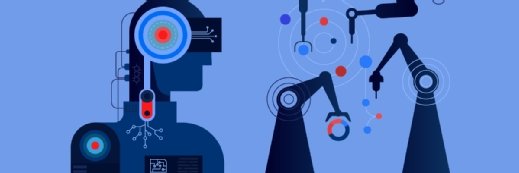
Getty Images
AI Reveals Cellular Variants Between Black and White Cancer Patients
Case Western Reserve researchers have received a $3.2 million grant to uncover potential racial bias in cancer care using artificial intelligence.
Researchers at Case Western Reserve University are using artificial intelligence to reveal cellular distinctions between black and white patients with prostate cancer, and have received $3.2 million in federal grants to further examine potential bias in AI.
In a recent study, the team showed that AI analysis of digitized images of cancer tissues show critical variations between black and white male prostate cancer patients. The findings indicate that the new population-specific information could significantly improve care for black men with prostate cancer.
“On one level, we’re simply trying to understand and answer this question: ‘Are there biological differences in the disease, in the cancer, that are a function of your ethnicity or your race?’” said Anant Madabhushi, the F. Alex Nason professor II of biomedical engineering at Case Western Reserve and senior author on a study published today in Clinical Cancer Research, a journal of the American Association for Cancer Research.
“In other words, is there something else going on that can’t be explained by other disparities? The answer appears to be, ‘yes.’”
According to the CDC, prostate cancer is the most common cancer among men in the US, aside from non-melanoma skin cancer. It’s also one of the leading causes of death among men of all races, the researchers said. Providers perform surgical resection of the prostate for about 75,000 newly diagnosed patient each year, but 30 to 40 percent of patients will have the cancer return.
To effectively manage prostate cancer, providers need to identify which men are at higher risk of disease recurrence following prostate surgery and recognize which patients would benefit from adjuvant therapy.
The team performed the prostate cancer study over three years at six sites and included nearly 400 men diagnosed with the disease. Researchers developed and trained an AI model to look for patterns not only from images of the tumor itself, but at tissue outside of the tumor, called the stroma.
This approach allowed the group to successfully identify which patients would respond well to chemotherapy, immunotherapy, or in some cases, whether cancer would return or how long a patient might live. Scientists were able to retroactively see visual signals in tissue slides from their initial diagnosis to determine which patients would suffer prostate cancer recurrence.
“We were able to look at, and actually measure, hundreds of thousands, even millions, of cancer cells to see features that a human could never see—including structural characteristics,” said Hersh Bhargava, PhD student at the University of California-San Francisco and lead author of the paper.
However, the patient pool in this study was about 80 percent white and 18 percent black, so the model was trained on data from mostly white individuals.
“The model was biased toward the majority population,” Madabhushi said. “Once we found the variations, applying the model to all would be doing a disservice to that one population.”
After creating a race-specific AI model, researchers found that there was a six-fold increase in accurately determining which black patients would have prostate cancer recurrence. The results suggest that there are biological variants among patients of different races that must be considered in prostate cancer care.
“It’s clear from the existing scientific literature that there are racial disparities in all cancers, but it appears that especially in prostate cancer that those differences can’t be explained by access to care or socioeconomic status—but rather that there is a biological component to how the cancers manifest differently between black and white patients,” said Bhargava.
Previous research has revealed racial and ethnic gaps in breast cancer, oral cancer, and other debilitating conditions, often attributed to an individual’s social determinants of health. However, the cellular differences found in this particular study imply that there is a research bias at the human level, which can show up in AI algorithms, researchers said.
“Even as we do this groundbreaking research, we can’t allow ourselves to get trapped into trusting these models blindly, so we need to question whether we are considering all populations (and) ask how diverse our research pool is,” said Madabhushi.
In order to fully recognize and understand the differences between individuals with cancer and other diseases, researchers need to train their models with diverse patient data.
“We know now that the risk is that if you just build a model for all patients, you will actually perform worse for patients in the minority and that’s something we cannot accept, even if it’s not something we did intentionally,” said Patrick Leo, a graduate student of biomedical engineering at Case Western Reserve University and lead author of the study.
“So, if you want a model to work on patients from all populations, you have to deliberately include a population-specific aspect.”





